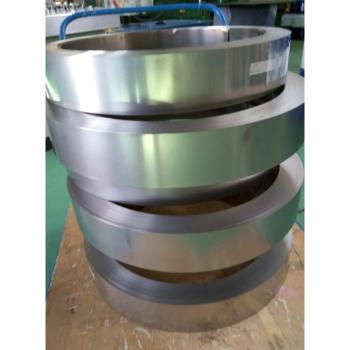
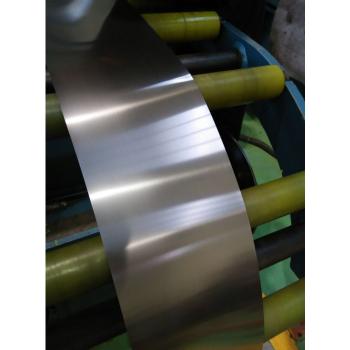
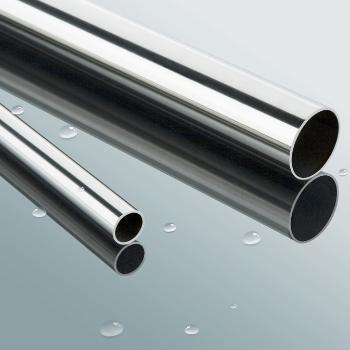
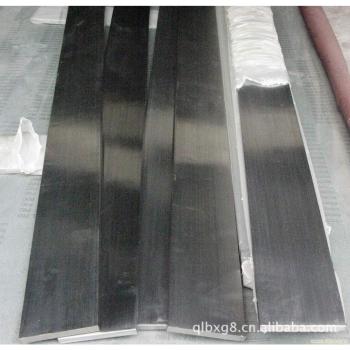
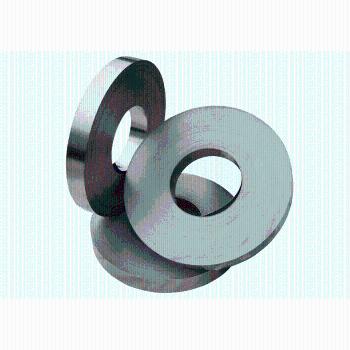
| QTY: | Price |
Min.Order : kg
Quantity:
-
+
Total Cost :
Packing Information
Pcs/Carton: N/A
Packing Size/Carton:N/A
Packing Vol/Carton: N/A
N.W./Carton: N/A
G.W./Carton: N/A
QTY in 40HQ: N/A
QTY in 40GP: N/A
QTY in 20GP: N/A
Professional sales of the national standard titanium alloy titanium alloy with titanium alloy rods and other series of titanium alloy products, complete specifications, the spot adequate · warmly welcome the broad masses of customers to Division I to discuss cooperation! The The
High temperature titanium alloy
The world's first successful high-temperature titanium alloy is Ti-6Al-4V, the use of temperature 300-350 ℃. Followed by the development of the use of temperature up to 400 ℃ IMI550, BT3-1 and other alloys, and the use of temperature 450 ~ 500 ℃ IMI679, IMI685, Ti-6246, Ti-6242 and other alloys. Has been successfully applied in the aircraft engine in the new high-temperature titanium alloy. British IMI829, IMI834 alloy; the United States Ti-1100 alloy; Russia's BT18Y, BT36 alloy. Table 7 for some countries the new high-temperature titanium alloy maximum temperature [26]. In recent years, foreign use of rapid solidification / powder metallurgy technology, fiber or particle reinforced composite materials developed titanium alloy as a high temperature titanium alloy development direction, so that the use of titanium alloy temperature can be increased to 650 ℃ above [1,27,29,31 ]. US McDonnell Douglas uses rapid solidification / powder metallurgy technology to develop a high purity, high density titanium alloy, at 760 ℃ its strength is equivalent to the current room temperature titanium alloy strength [26].
Titanium aluminum compound based titanium alloy
Compared with the general titanium alloy, titanium aluminum compound-based sodium Ti3Al (α2) and TiAl (γ) intermetallic compound is the biggest advantage of high temperature performance (the maximum temperature of 816 and 982 ℃, respectively), strong antioxidant resistance Creep performance and light weight (density only nickel-based superalloy 1/2), these advantages make it the future of aeroengine and aircraft structural parts of the most competitive materials [26]. At present, there are two Ti3Al-based titanium alloy Ti-21Nb-14Al and Ti-24Al-14Nb- # v-0.5Mo in the United States began mass production. Other Ti3Al-based titanium alloys developed in recent years have Ti-24Al-11Nb, Ti25Al-17Nb-1Mo and Ti-25Al-10Nb-3V-1Mo et al. [29]. TiAl (γ) -based titanium alloys are of interest Ti- (46-52) Al- (1-10) M (at.%) Where M is v, Cr, Mn, Nb, Mn, Mo and W. Recently, TiAl3-based titanium alloys began to attract attention, such as Ti-65Al-10Ni alloy [1].
High strength and high toughness type β titanium alloy
Β-type titanium alloy was the first 50 years of the 20th century by the United States Crucible developed B120VCA alloy (Ti-13v-11Cr-3Al). Β-type titanium alloy has a good hot and cold processing performance, easy forging, rolling, welding, through the solution - aging treatment to obtain high mechanical properties, good environmental resistance and strength and fracture toughness with a good match. The new type of high-strength and high-toughness type β-type titanium alloy is the most representative of the following [26,30]: Ti1023 (Ti-10v-2Fe- # al), the alloy structure and the commonly used 30CrMnSiA high-strength structural steel (Ti-15V-3Cr-3Al-3Sn), the cold working performance of the alloy is better than that of industrial pure titanium, and the tensile strength at room temperature is more than 1000MPa after aging; β21S (Ti-15Mo- 3Al-2.7Nb-0.2Si), which is a new type of anti-oxidation, ultra-high strength titanium alloy developed by American Titanium Company Timet Division, has good anti-oxidation performance, excellent hot and cold processing performance, can be made of thickness (Ti-4.5Al-3V-2Mo-2Fe) titanium alloy, the alloy of high strength, superplastic elongation of up to 2000%, and the super-plastic (SPF / DB) technology to produce a variety of aerospace components; Russia developed BT-22 (TI-2), which can be used to replace Ti-6Al-4V alloy with Ti-6Al-4V, 5v-5Mo-1Cr-5Al), the tensile strength of up to 1105MPA or more.
Flame Retardant Titanium Alloy
Conventional titanium alloys have propane tendency under certain conditions, which limits their application to a large extent. In response to this situation, countries have launched a research on the flame retardant titanium alloy and made a certain breakthrough. (Hereinafter referred to as Ti-1720), the nominal composition of 50Ti-35v-15Cr (mass fraction), is a continuous combustion is not sensitive to flame retardant titanium alloy, has been used in F119 engine. BTT-1 and BTT-3 are Russian-made flame-retardant titanium alloys, both Ti-Cu-Al alloys, with very good thermal deformation process performance, which can be used to make complex parts [26].
Medical titanium alloy
Titanium non-toxic, light weight, high strength and has excellent biocompatibility, is a very good medical metal materials, can be used as implants implanted in the human body. At present, in the field of medicine is still widely used is Ti-6Al-4v ELI alloy. But the latter will precipitate a very small amount of vanadium and aluminum ions, reducing its cell adaptability and may cause harm to the human body, this problem has long been widespread concern in the medical profession. As early as the mid-1980s, the United States began to develop aluminum-free, vanadium-free, biocompatible titanium alloys for orthopedics. Japan, the United Kingdom also made a lot of research work in this area, and made some new progress. For example, Japan has developed a series of excellent biocompatibility α + β titanium alloy, including Ti-15Zr-4Nb_4ta-0.2Pd, Ti-15Zr-4Nb-aTa-0.2Pd-0.20-0.05N, Ti-15Sn 4Nb-2Ta-0.2Pd and Ti-15Sn-4nb-2Ta-0.2Pd-0.20. The corrosion strength, fatigue strength and corrosion resistance of these alloys are better than those of Ti-6Al-4v ELI. Compared with α + β titanium alloy, β titanium alloy has a higher strength of water, and better incision performance and toughness, more suitable for implantation into the human body as an implant. In the United States, five kinds of β-titanium alloys have been recommended to the medical field, namely TMZFTM (TI-12Mo- ^ Zr-2Fe), Ti-13Nb-13Zr, Timetal 21SRx (TI-15Mo-2.5Nb-0.2Si), Tiadyne 1610 (Ti-16Nb-9.5Hf) and Ti-15Mo. It is estimated that in the near future, such as high strength, low elastic modulus and excellent formability and corrosion resistance of the titanium alloy is likely to replace the current widely used in the field of medical Ti-6Al-4V ELI alloy